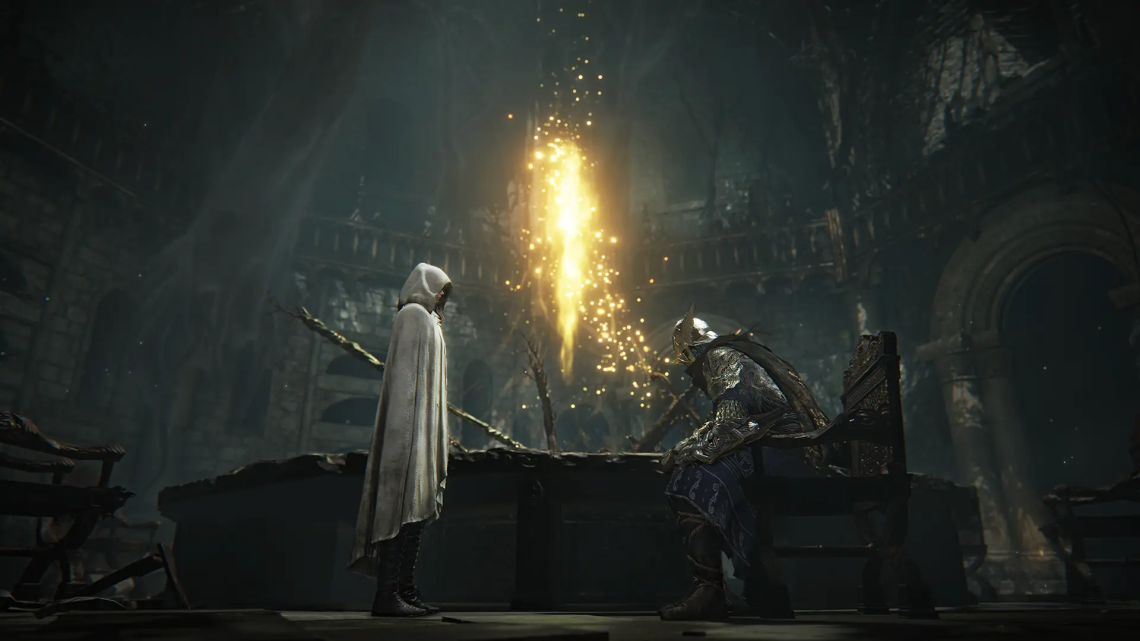FromSoftware probably is not the first developer that comes to mind when thinking about great multiplayer games. Their titles have, historically, had multiplayer functionality whether you’re summoning friends to help take down a difficult boss, leaving messages behind to help (or annoy) strangers, or getting attacked by antagonistic invaders. I have used these systems many times and always found them cumbersome. They ask the player to jump through several hoops in order for all the gears to work properly and, when they do, they are prone to jamming. Therefore, the biggest question surrounding Elden Ring: Nightreign is how well FromSoftware can build upon their unreliable online foundation for a truly multiplayer-focused experience?
Hopping on Nightreign
As a spin-off of the colossal 2022 title, Elden Ring, Nightreign had some big shoes to fill and many multiplayer functions to work on. Elden Ring at its core is a game about exploration. Multiplayer is there if you desire, but only in certain spots and only until you and your partner defeat the boss of a given area. It was not built to be a predominantly cooperative experience. Nightreign, then, needed to make modifications to this system and allow an easier online experience for up to three players. While changes were made they are the bare minimum to get you up and running leaving several key and commonplace features of modern multiplayer experiences out.
Playing with a group of friends is simple. Boot up the game and send an invite to up to two other friends to join your in-game party and begin your adventure. A stark contrast to how you would summon your friends in the previous titles. Before Nightreign, you’d first have to set up a specific password system so that only you and your friend, using the same password, could see each other’s summon signs on the ground. In some, you also needed to use a limited resource to enable cooperative play in the first place. This cumbersome way to bring friends into your world was always a headache and has gladly been streamlined for Nightreign. That is where the positive changes to multiplayer end.
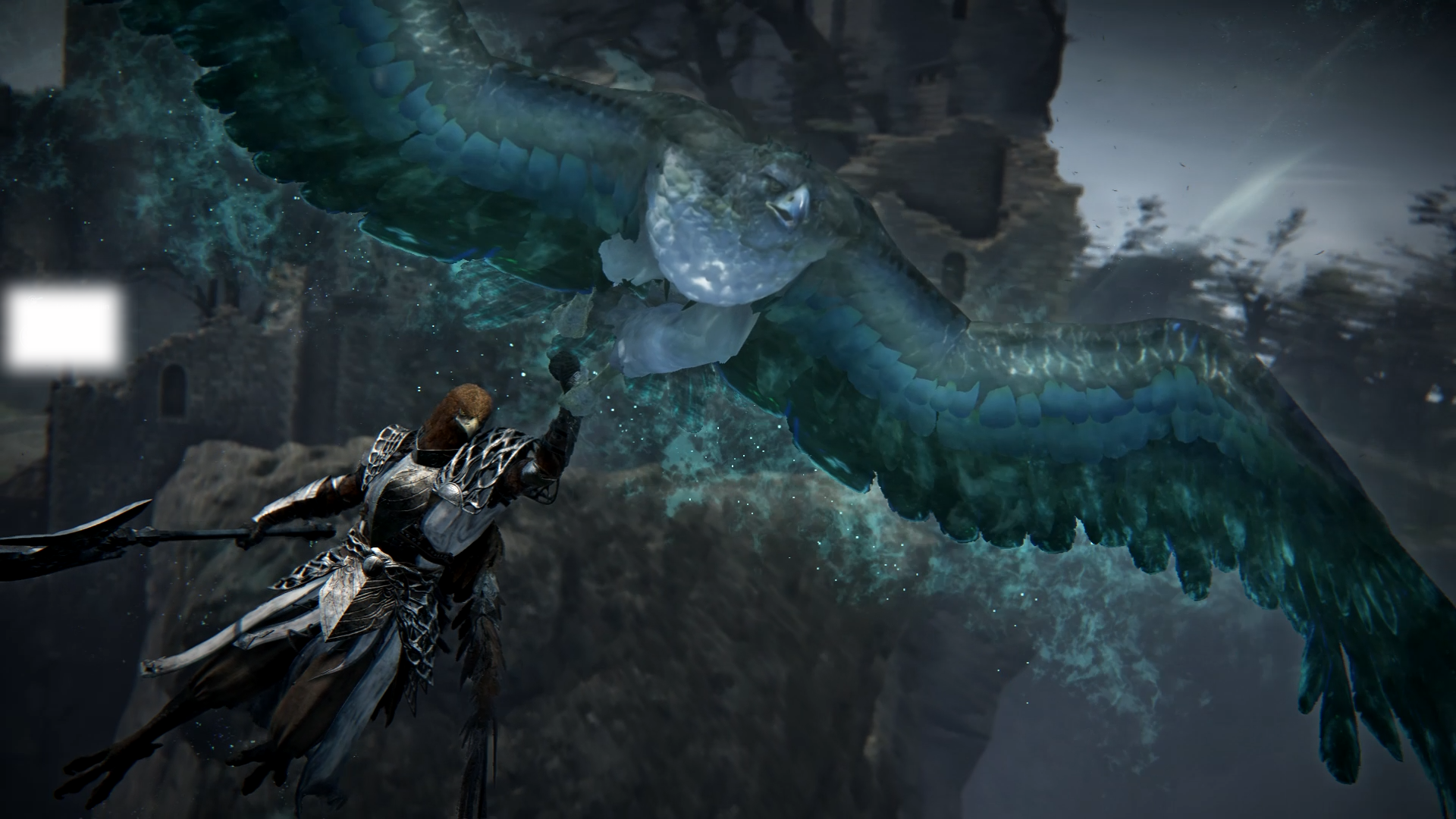
There are two factors that hamper the multiplayer experience the most. Firstly, there is no cross-play. There is no excuse for a developer as large and accomplished as FromSoftware to lack what is more and more becoming a standard multiplayer function. Second, you can only run an expedition into Limveld solo, or with a group of three. There is no option for a two-man expedition. There does not seem to be any reason for this restriction. Nightreign plays best with three players, but it would not play any worse with two. Solo runs are already hard as nails and will be reserved for the hardest-core of players. Why not allow a duo to take on a run themselves? FromSoftware has since recognized this as an “oversight” and promised to fix it. Time will tell how long that takes. At the time of this review, it has not and therefore must be graded accordingly.
There are other minor inconveniences with multiplayer as well. There is a concerning lack of team chat which reduces your ability to communicate with random players. As a result, queuing with random players is by all metrics a significantly worse experience than with friends talking over a voice call. With all of their resources, it is shocking that FromSoftware still cannot seem to get a grip on effective, seamless multiplayer. Thankfully, once you iron out the multiplayer woes, the actual experience of each Nightreign run is spectacular.
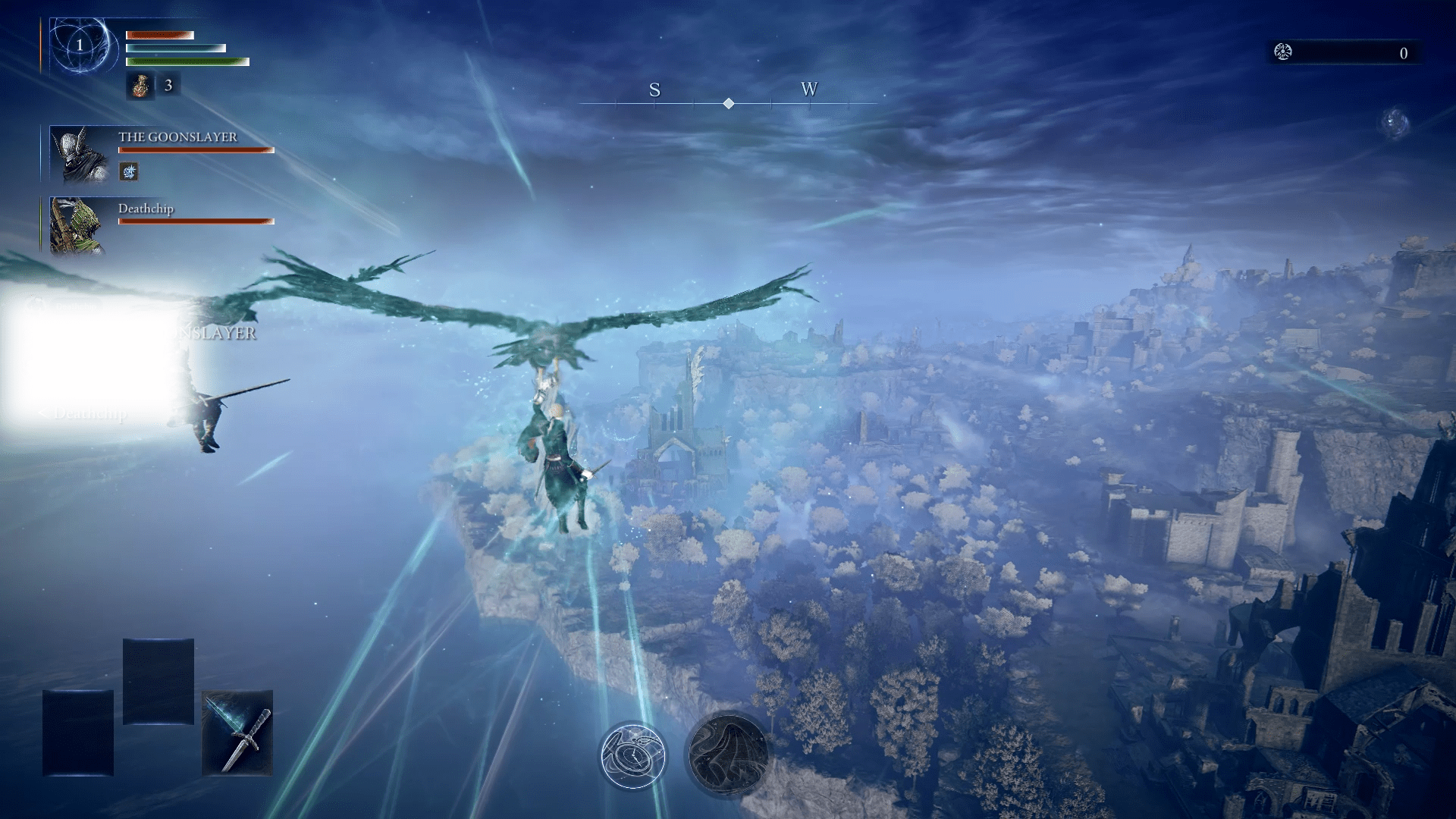
Conquering the Night
Launching into an expedition, soaring through the skies on a spectral hawk, immediately mapping out key destinations to work toward, clearing areas, slowlying building up your character into a powerhouse ready to take on each boss at the end of the night, it is thrilling. Each run is a constant race against the clock as you and your fellow Nightfarers attempt to maximize your efficiency in clearing each location of interest on the map. Playing well is only half of the equation for a successful run. You cannot simply be good at the game, you have to be fast or else the rest won’t matter. Learning the map, identifying the best possible routes for maximum experience gain, and assessing which locations are worth doing and which are better off skipped is a key skill players will need to become adept at in order to have a fighting chance at the end of the third night.
It is overwhelming at first, especially if you are new to Elden Ring. Your first few runs will likely fail. New players will need to be carried along with heavy guidance from veteran players and veteran players will need to re-adjust how they explore and the speed at which they explore to accommodate the time limit (represented by a circle of blue flames that encroaches upon you). Elden Ring was a game all about exploration. Slowly working your way through the Lands Between, searching every nook and cranny, reading item descriptions, and gawking at the majesty that world provided. Nightreign is the exact opposite of that. There is no time to satiate your curiosity, no time to read anything of note, no time to stare at a beautiful vista. If you’re stopping to read something for too long or gaze out at the night sky, you’re wasting time and will be punished for it.
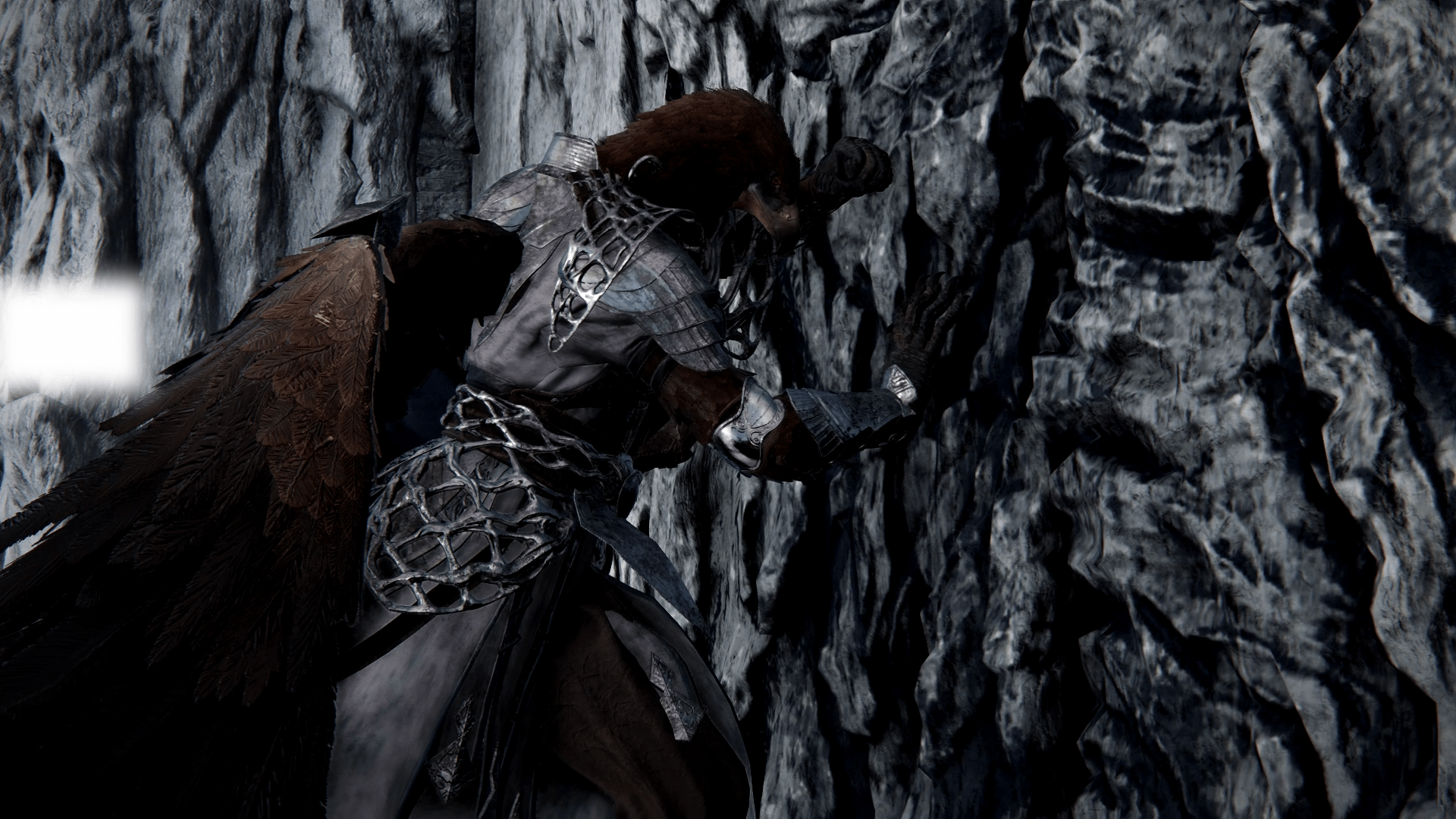
This will turn many players off from Nightreign. It seems antithetical to the core design philosophy of Elden Ring to eliminate that sense of exploration and curiosity. For me, an avid fan of FromSoftware titles who continuously replays them, I felt right at home. While the initial pace of each run was jarring at first, I eventually adapted and shifted my mindset. Nightreign is not a game built for the slow explorer. It is a game built for the speedrunner. Once you have done enough playthroughs in a FromSoftware game, you develop a path you tend to follow. You head to specific locations to grab build-necessary items first, rushing around to become more powerful, taking on certain bosses at planned times, you turn these games which are traditionally slow and methodical experiences into fast-paced runs. That is what Nighreign is. A distillation of the feeling die-hard players get when doing their fifth, tenth, or hundredth playthrough of a FromSoftware title. It is a niche style built for someone like me.
One of the biggest gripes with FromSoftware titles is, even when replaying them and rushing toward whatever build you desire, you tend to get locked into that build. If your character is built for strength, you’re going to use strength weapons. If they’re more dexterous, you’ll be using dex weapons. Typically, you’ll find one or two, maybe a third weapon that you actually use the entire game. You’ll pick up dozens upon dozens more, but despite how awesome they look or interesting they sound, you didn’t build your character toward that weapon and already invested enough upgrade materials into your current build that these other options just fall into the bin of unused weaponry like all the rest. In this scenario, a sword that may blast fire and ice at an enemy becomes no more useful than a broken straight-sword. Nightreign changes this completely.
Because each item and weapon you receive is random, your build variety in Nightreign is greater than in any FromSoftware game in existence. The character class you choose will push you toward specific directions based on their stat scaling and abilities. Dutchess will prefer sorceries and daggers, Guardian prefers halberds and shields. Even within those parameters, your build will vary greatly depending on each run. I’ve had runs with the Dutchess, my favorite Nightfarer, in which I’ve used dual daggers, two-handed a katana, used talismans for faith attacks, used sorceries from power staves, swung a bleeding flail at an enemy, used a giant holy spear, and slashed enemies with wolverine claws. Just within one character I’ve had to develop an understanding, appreciation, and preference for so many different weapons and builds. If you decide to become proficient with another character, you’ve likely doubled your potential build variety. With so much variance, every run through Limveld will feel like a unique challenge.
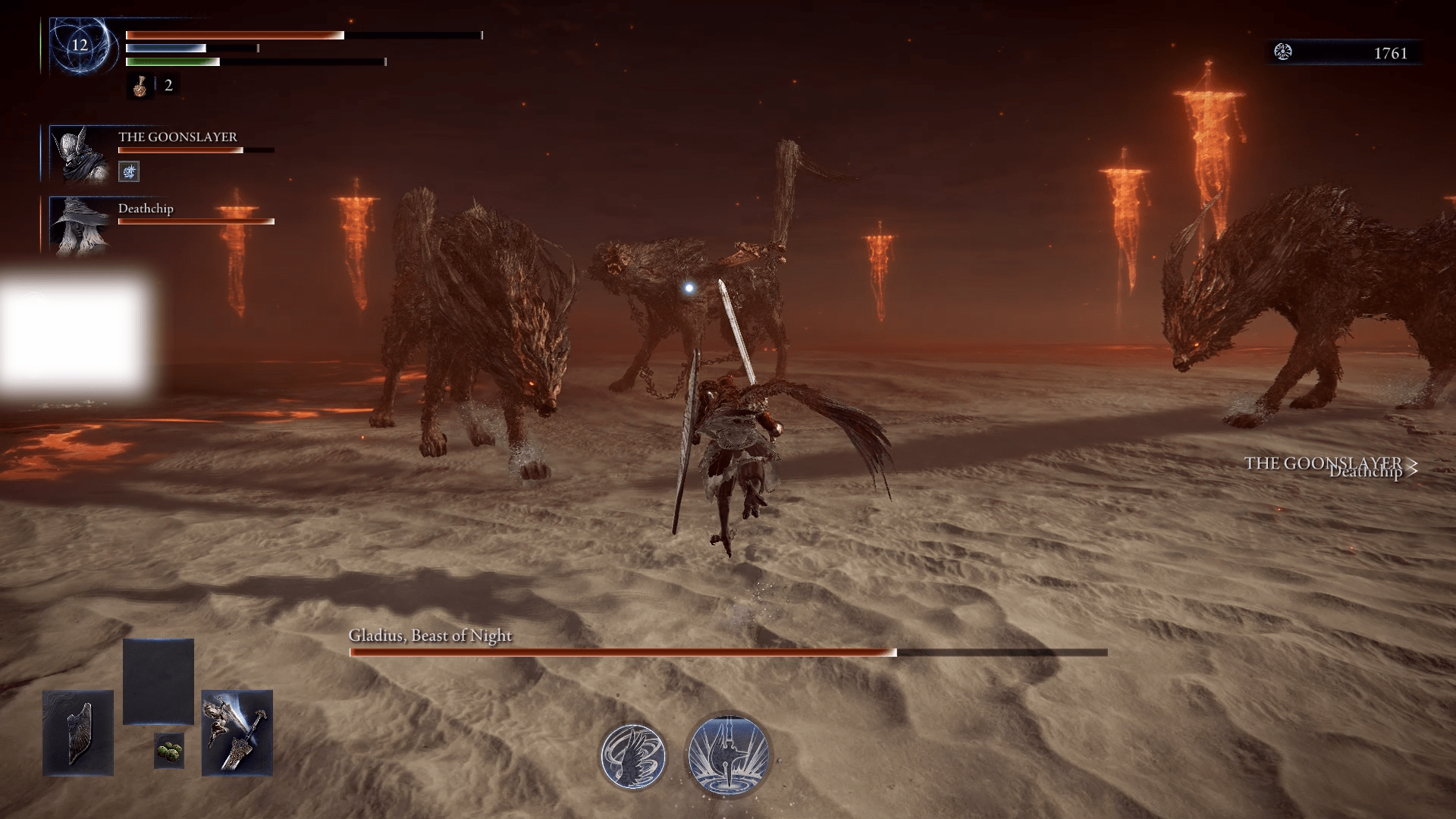
The biggest challenge will always be the Nightlord faced at the end of each run. These bosses are the highlight of Nightreign. Each has been designed explicitly around the core ideas of the game and challenge you and your partners to coordinate effectively, play well independently, and serves as a test of how well your run in Limveld was. Each lord has some unique mechanic and weakness creating a fun and varied dynamic with each fight. For example, the first Nightlord, Gladius, a large flaming wolf-like cerberus has a second phase in which he splits off into three independent wolves creating chaos and confusion on the battlefield. The conceit is for each to attack one of the three Nightfarers independently, but in practice it is much more chaotic. They have a tendency to target one player for an all-out blitz of attacks, or split their attention across players unevenly. One way to make this fight easier is to take advantage of the boss’s weakness, Holy, which not only does more damage but also can cause the inflamed beast to cool off and become more docile for a few moments.
In another encounter, with Adel, Baron of the Night–accessed through the Gaping Jaw expedition–you can poison him. Doing so will stagger him out of a major attack he may be planning and cause him to take a moment to spit out all of the built up poison out of his body creating an opening for your team to launch an all-out assault. These dynamics are fun to exploit and make the runs in Limveld feel crucial as you prepare to face the dangerous Nightlord. With one exception, each Nightlord gets better and better as you move down the list with the final boss of the entire experience in the conversation with some of the best bosses this developer has ever made.
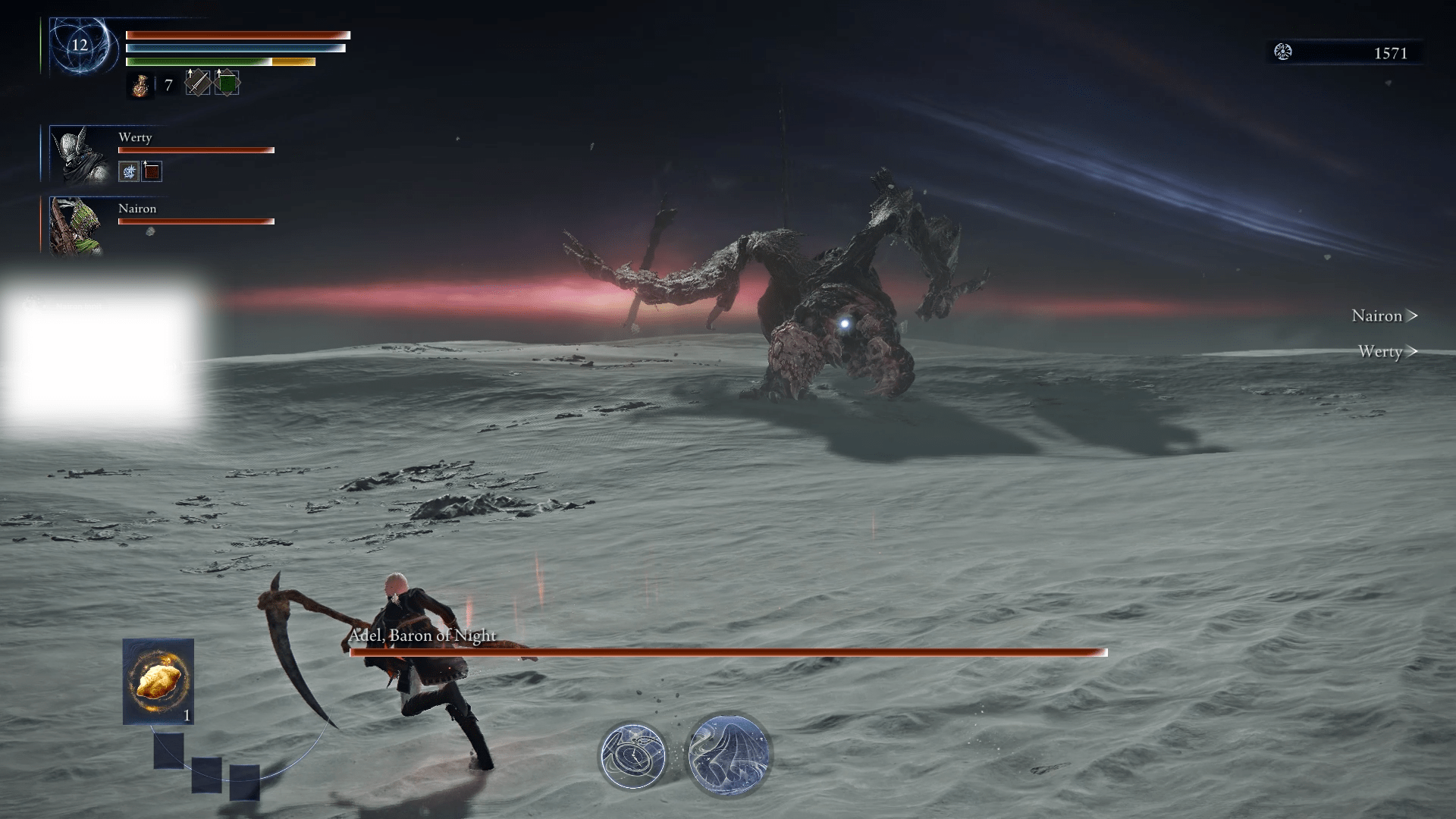
Waning Twilight
As great as the Nightlords are, the minor bosses you face during the first and second nights of each run leave much to be desired. A huge draw to this game was the inclusion of infamous bosses from the Dark Souls franchise into the Elden Ring gameplay style. We saw presences like the the Centipede Demon from Dark Souls, Duke’s Dear Freja from Dark Souls II, and the powerful Nameless King from Dark Souls III, all bosses revealed in trailers. Unfortunately, while there are more Dark Souls bosses to encounter in Nightreign’s rotation of possible bosses, there are less than I expected. I wanted to see more. There was a wonder entering into Nightreign that anyone could appear from the Dark Souls games and yet, not too many did. I can only assume many are being held back for potential DLC in the future. For now though, the selection of returning bosses is disappointing.
That disappointment also plays a role in one of Nightreign’s largest issues, replayability. Rouge-likes need to have high replayability in order to function. Typically, this comes in the form of high variance. Each run in a roguelike needs to feel unique. Different enemies, locations, weapons, buffs and debuffs, and special events are required to ensure players do not get bored doing essentially the same gameplay loop over and over again. In this aspect, Nightreign is at its weakest. I enjoyed the challenge of taking on all 8 Nightlords and rolling the credits. It was a thrilling experience that I spent 40 hours to accomplish. After those 40 hours, I can’t see myself returning to Nightreign very much barring DLC or content updates.
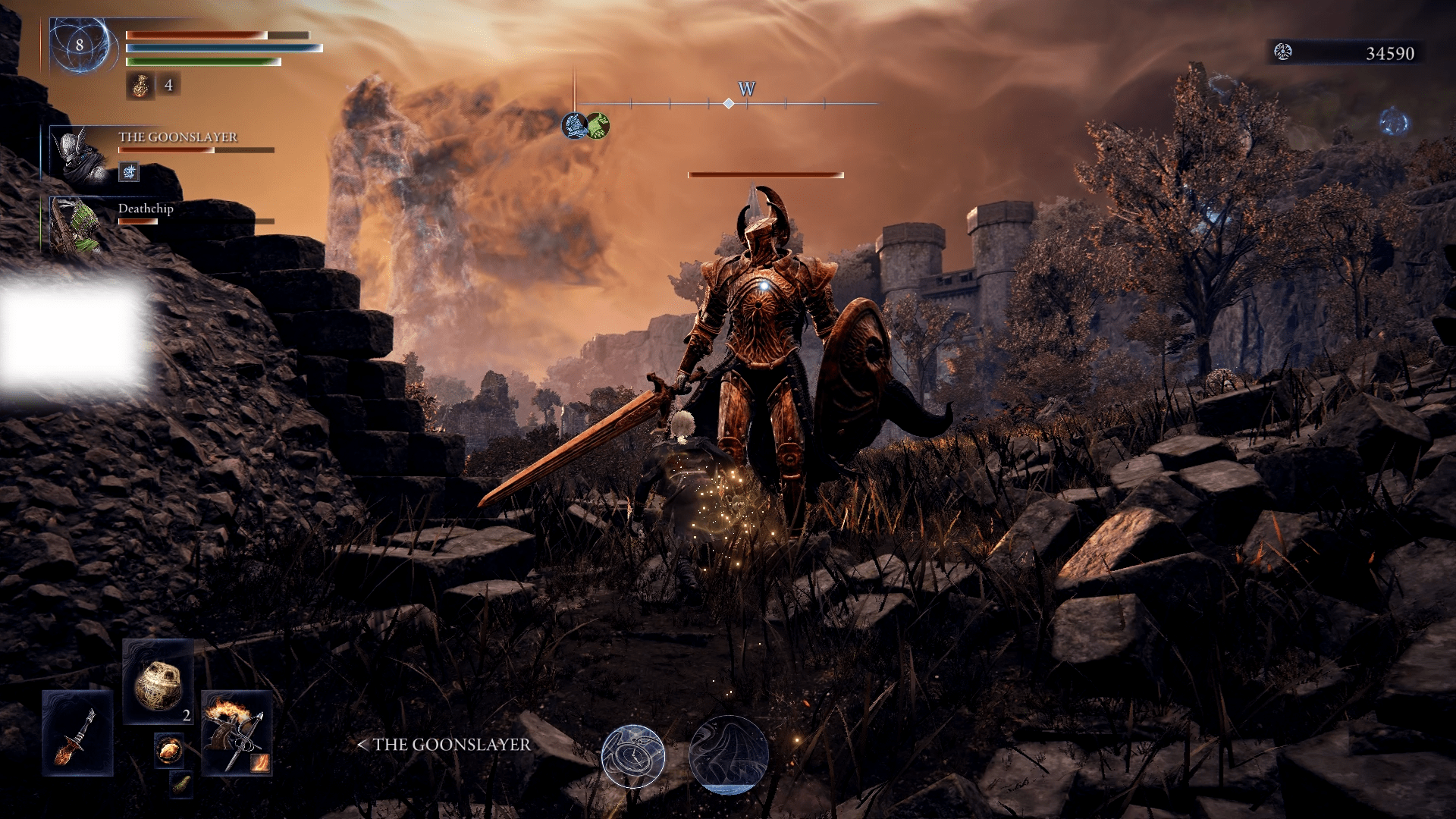
The reason is that the runs are not varied enough and the elements that carry over between runs, relics and character stories in the form of remembrances, are not compelling whatsoever. Relics are an extremely underwhelming upgrade system. You receive relics each time you finish a run, successful or not. Up to three can be equipped to each character and gives them certain buffs to help guide your playstyle and make your character more powerful. Unfortunately, these relics do not feel as impactful as they should. I rarely equipped a set of relics and felt a direct impact because of their inclusion. I tended to forget which relics I had equipped rather than pushed for certain builds because of them. The character stories are equally as shallow.
Each Nightfarer has entries in the journal which can be read while in the Roundtable Hold and which fill in their backstory. As you play that character more, you unlock more entries in what is essentially a diary. After a certain point you can enter a remembrance. While inside a remembrance you can progress that character’s story further and are given a specific task to accomplish while on an expedition in order to complete the remembrance. Sometimes this means going to a specific spot to defeat a mini-boss and collect a certain item, sometimes it means defeating an entire Nightlord. By the end, you get a cutscene that concludes the story for that character and are rewarded with a special skin that barely changes what the original design of the character was in the first place. This method of storytelling was not engaging and never encouraged me to really care much about the characters. There were some minor touching moments, but nothing that would last. It is a system that desperately needs improvement if there ever is a sequel.
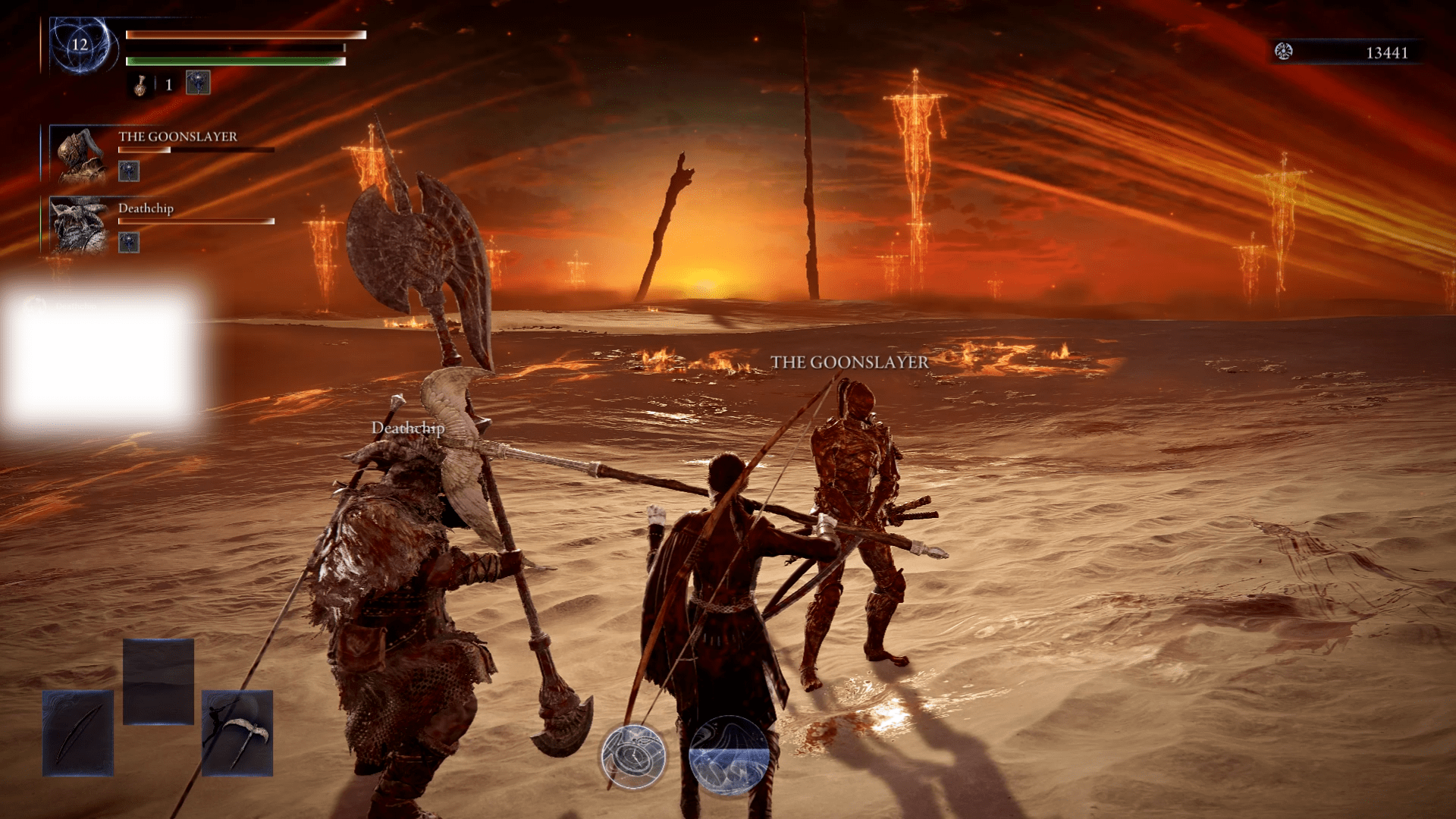
A Night to Remember
Despite its glaring flaws, Nightreign is a fantastic experience for long-time FromSoftware and, specifically, Elden Ring fans. At its core, it is more Elden Ring, an automatic positive. When Nightreign is clicking, it soars to some of the highest heights FromSoftware games can get. Taking on tough bosses, collecting powerful rewards, adapting to changes in your build, traveling the lands with your friends, and clutching out a victory against a powerful Nightlord make the runs in Nightreign some of the best experiences I’ve had in a FromSoftware game. At the same time, it does seem like an Elden Ring game first and a rougelike second. Relics and character stories are not compelling systems to encourage continuous playthroughs after you’ve rolled credits. The lack of cross-play, two player queues, and voice chat hampers the multiplayer functionality. Having only one map to explore–with some minor variation–can make each run feel a bit too samey. Nightreign gives Elden Ring fans more of what they want, delivers excellent boss battles, and pushes players to try more builds than ever before but lacks a compelling reason to continue playing after the credits have rolled.
The Review
Great
